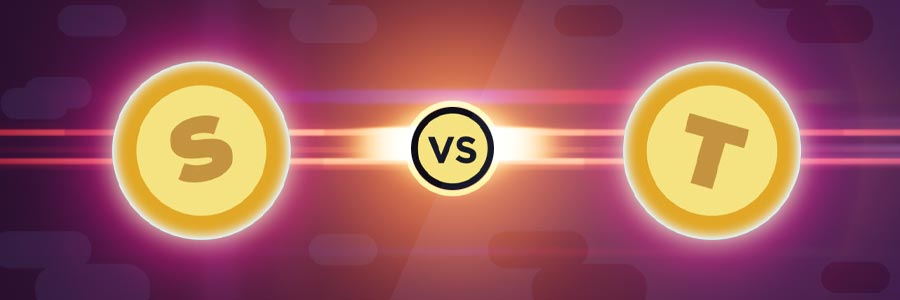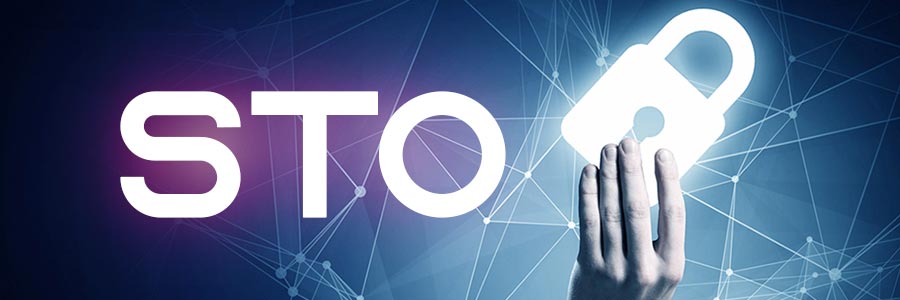STO Review: How Security Token Offerings Work Guide

A security token offering, or STO, is what happens when combining an IPO and ICO together. You get the legal regulatory framework of a security sale paired with a blockchain-based digital token creation of an ICO.
Forbes recently suggested that security token offerings could be “the future of raising money”.
What is an STO? How do security token offerings work? How can ordinary investors like you participate in the STO market? Let's cover the security token history, regulation benefits and list the most popular exchanges to explain everything you need to know about STOs and how they work in the crypto ecosystem.
What is a Security Token Offering?

The definition of a security token offering is when a sale happens where an investor exchanges money for coins or tokens. These coins or tokens are securities: they are linked to an underlying investment asset like stocks, bonds, real estate investment trusts (REITs), and other assets.
An STO is similar to an ICO. In fact, they might function in a near-identical way. With both an STO and an ICO, someone is exchanging money for a digital token.
The main difference between an STO and an ICO, of course, is in the token being sold. With an ICO, the token can be virtually anything – from digital currency to a utility token. With an STO, the digital token is a security. The token is a fungible, negotiable financial instrument with specific monetary value.
What Are Security Tokens? How Do They Work?

Security tokens are a digital representation of some type of security asset. The most common security tokens represent:
Capital Markets: A company might convert its shares to tokens. Token holders might earn dividends or have certain voting rights.
Equity Funds: An equity fund might convert its shares to tokens. Token holders are entitled to a portion of profits earned by the equity fund.
Commodities: A commodity might be split into tokens, then offered during an STO.
Real Estate: Real estate equity could be converted into tokens – just like how a REIT operates.
Ultimately, security token offerings aren’t changing the underlying securities; they’re the same securities you can buy through an ordinary investment platform. However, they are changing the way companies and investors approach security sales.
Where Do Security Token Offerings Take Place?

Security tokens are not traded on regular cryptocurrency exchanges.
Security token trading is regulated. Only certain types of people can participate in legal security token trading.
The exchange needs to fully comply with regulations to offer legal security trading, and the exchange may need investors to meet certain qualifications. Investors might need to be accredited, for example. Investors may need to complete an extensive onboarding process to verify their identity and accredited status.
For all of these reasons, the security token market takes place on regulated exchanges or specialty exchanges.
Regulated exchanges like Coinbase and Kraken list security tokens, for example, as do specialized exchanges like CEZEX.
Check our list at the bottom to see the biggest security token exchanges available today.
History of Security Token Offerings: Why Do We Need STOs? Where Did They Come From?

To understand security token offerings, we first need to explain initial coin offerings (ICOs).
2017 Was the Year of the ICO
2017 was the year crypto and bitcoin became mainstream. It was also the year of the ICO. Startups worldwide started using initial coin offerings (ICOs) to raise funds.
With an initial coin offering, a company was selling a digital coin in exchange for fiat currency (like USD) or a cryptocurrency (like BTC or ETH). Investors could send money to the company, and the company would send coins in return.
ICOs were praised as a novel new fundraising method. ICOs balanced the playing field, allowing tech startups to raise significant amounts of capital without relying on the clunky, traditional world of venture capital fundraising. Anyone in the world could launch an ICO, selling tokens to anyone who was interested.
ICOs exploded in 2017. Startups raised a total of $5.6 billion through ICOs by the end of the year. ICO activity peaked in Q1 2018 when startups raised $6.3 billion in the first three months of the year alone.
Eventually, however, ICOs were brought down by a predictable enemy: regulation.
Mid-2018: Regulation Brings ICOs Back to Earth
Most countries have strict investment laws governing who can sell investments to whom. In the United States, for example, any company selling stock must register the sale with the Securities and Exchange Commission (SEC).
During 2017, ICOs were in a grey area. People weren’t really sure if the coins being sold represented stocks. Was a token like bitcoin really comparable to a share in a company? What about Ethereum? XRP? Tokens varied widely in their functions and fundraising methods, and investors were left confused.
This isn’t the first time regulators in the United States have sought to distinguish stocks from other assets, however. After a landmark Supreme Court case in 1946, the SEC has used the Howey Test to determine if an asset is a stock. Essentially, the Howey Test states that if the asset functions as a security, then it is a security under the rule of the law.
Some coins were found to have failed the Howey Test. These companies were selling securities under the guise of an ICO. Other coins passed the Howey Test.
Rules vary widely between coins. Most regulatory bodies in the United States, for example, acknowledge that bitcoin should pass the Howey Test without issue. There’s no single organization that sold bitcoin in an ICO, for example, and no centralized organization raised money through the sale of bitcoin.
Ethereum, which was sold in an ICO launched by the Ethereum Foundation, and XRP, which has close connections to the success of the private company Ripple, may be treated as securities in the future.
Because of all of this confusion, ICO operators began banning customers from the United States. Soon, financial regulators in other countries joined the trend.
Today, there are still plenty of ICOs. Some ICOs exist in a grey area of the law, allowing citizens of some countries but not others to participate. Other ICOs are completely illegal, launched in the hopes that the SEC won’t take action. And some ICOs are completely legal even in the United States: the items being sold pass the Howey Test and are not considered stocks.
All of this background is important because it explains where security token offerings came from.
Security token offerings emerged because people recognized the benefits of ICOs (convenience, accessibility, speed) but acknowledged the need for greater regulation. Security token offerings combine the regulation of an IPO with the convenience of an ICO, but always be aware the risks of bitcoin scams and fraudulent ICO schemes.
Benefits of a Security Token Offering

During the ICO heyday of 2017 to 2018, token issuers sold bags of tokens with no concern for existing securities laws. Investors participating in unregulated token sales had no legally-protected rights.
Security token offerings are designed to be a regulatory-compliant alternative to ordinary token sales. A security token sale gives investors certain legally-protected rights. It grants security token holders rights to dividends or other predefined revenue streams, for example.
Issuers also benefit from security token offerings. Issuers know their tokens are being bought by accredited, verified investors. Plus, issuers can be honest about how the tokens work. Issuers can describe the specific economic value of the token, for example, instead of dancing around the fact that the token is a security.
Some of the biggest advantages of security token offerings include:
Legally Sell Securities as Tokens: During the ICO craze of 2017 to 2018, companies were effectively selling securities as digital coins. Coin holders had certain rights – like dividends or voting rights, for example. Other ICOs were more subtle about the fact that they were illegally selling securities. With STOs, there’s no need to dance around the fact that the token is a security.
Regulated: All legitimate businesses need to abide by regulations in the countries in which they do business. Security token offerings are regulated. They abide by the country’s rules regarding stock sales. A country selling securities in the United States, for example, needs to abide by SEC or FTC regulations.
Avoid Threat of Future Crackdowns: With an ICO, someone might have a promising token to sell, but investors are wary because of the threat of future crackdowns. If a project sounds good but also potentially violates SEC regulations, then it throws a dark cloud over the entire project.
Credibility: If someone walked up to you on the street and told you about a great stock they were selling, you’d be skeptical. If you login to a regulated trading platform and see a new security token offering from a transparent and regulated company, it gives your investment more credibility.
Convenience: ICOs changed the way startups raised money. ICOs also had their flaws. A security token sale combines the benefits of ICOs without the downsides. It’s convenient to buy a token online by logging into a digital exchange.
Programmability: Security tokens can be more than just a digital piece of paper with your name and a stock certificate on it. Security tokens can be programmable and enforced by smart contracts.
Automatic Dividend Payouts or Voting Rights: Some security tokens are customized via a smart contract to automatically deliver dividend payouts. The smart contract separates the company’s profit into different portions, then distributes a certain percentage of profit to each token holder. Other security tokens have built-in automatic voting rights powered by smart contracts.
Open to International Investors: Some securities marketplaces are only open to local investors. With a security token offering, anyone in the world can participate in the token sale.
Less Institutional Manipulation: Theoretically, STOs should have less institutional manipulation. A free and open market with fewer mediators should reduce market manipulation. It breaks securities sales outside of the boundaries of big institutions.
More Liquidity: Security tokens are traded on specialized security exchanges. Investors can buy one or more securities tokens through these exchanges, giving investors an easy way to liquidate or adjust their holdings.
New Stakeholders with New Rules: STOs allow companies to create a new set of stakeholders with new ideas about debt, equity, voting, and contributions. It’s a customizable, adaptable security for a new world of finance.
Because of all of these benefits, security token offerings are changing the fundamentals of finance.
When Does a Token Become a Security?

If a digital token functions like a security, then it is generally considered a security in the eyes of the law.
How do we tell if a digital token is functioning like a security? Well, the most common method is to use the Howey Test.
The Howey Test
The Howey Test refers to a 1946 ruling by the United States Supreme Court. A citrus farm named the Howey Company of Florida decided to lease out half of its large property to finance additional development. Half of the property was leased to different investors. Those who purchased the Howey land had none of the “knowledge, skill, and equipment necessary for the care and cultivation of citrus trees”, which made them speculators. These people purchased the lease based on the assumption that it would generate profit for them “as a result of the efforts of someone else”.
The Howey Company got into trouble when it failed to register this sale with the United States Securities and Exchange Commission (SEC). The SEC argued that the Howey Company was selling an unregistered security, while the Howey Company argued that it wasn’t a real security.
The case ultimately made its way to the United States Supreme Court, which ruled that the Howey Company’s land sales were indeed securities. Investors were buying the land because they expected to profit off of the work of somebody else. Thus, the sale needed to be registered.
How to Pass the Howey Test
Under the Howey ruling, something is considered a security if it meets the following qualifications:
It is an investment of money
The investment is in a common enterprise
There is an expectation of profit from the work of the promoters or the third party
The Howey Test and Crypto
The Howey Test has played a crucial role in crypto since the beginning. In 2017 and 2018, ICO operators became increasingly wary of passing the Howey Test. If an ICO failed the Howey Test, then it could be declared an illegal security sale by the SEC. If an ICO passed the Howey Test, then it was legal.
An ICO might advertise their token as having no expected investment value, for example. The ICO might describe the token as a “utility” token that could only be used to interact with the platform. Binance Coin (BNB), for example, is used to reduce trading fees on the platform.
This is where things get tricky: the value of a utility token is still expected to rise as a platform becomes more popular. BNB’s value has skyrocketed from pennies to over $15 because it’s the utility token for one of the world’s biggest exchanges.
What’s the Difference Between Security Tokens and Tokenized Securities?

You may be surprised to learn there’s a difference between security tokens and tokenized securities. It’s easy to get the two confused, but many believe most of the world's valuable assets will experience tokenization in the future.
The biggest difference between the two is that security tokens are newly issued securities built on a distributed ledger, while tokenized securities are just token representations of financial products that already exist.
If you issued a new financial product that has security features, then it’s a security token. If you took an existing financial product, separated it into 1 million separate pieces, and sold each piece, then it’s a tokenized security.
Although security tokens and tokenized securities may have a similar appearance and terminology, issuing security tokens has nothing to do with tokenized securities.
A Brief History of Security Token Offerings

The first security token offering was launched by Blockchain Capital (BCAP) on April 10, 2017. The company raised $10 million in one day.
Ever since this first successful STO, more companies have explored the benefits of STOs.
Other notable moments in STO history include:
April 10, 2017: Blockchain Capital completes the first known security token offering.
September 22, 2017: Science Blockchain (SCI) completes its STO.
March 1, 2018: Spice VS completes an STO.
May 1, 2018: Quadrant Biosciences completes its STO, offering the first sale of tokenized corporate equity hosted on a blockchain.
August 1, 2018: Aspen Coin offers an STO, marking the first sale of tokenized real estate ownership (like a token version of an REIT).
December 1, 2018: The Hub at Columbia offers its STO, marking the second tokenized REIT sale.
January 10, 2019: Sharespost launches its STO, which is the first trade of digital securities by an ATS and broker-dealer in which the ATS custodied the digital securities.
January 24, 2019: tZERO: A dedicated security token offering exchange called tZERO opens.
Security Token Exchanges: Complete List of STO Exchanges

Today, investors can buy or sell security tokens on a variety of STO exchanges. Thanks to our friends at token.security, here’s the complete list of STO exchanges available today:
Archax: Archax is a new, regulated institutional exchange for trading asset-backed tokens. The London-based exchange was founded by experts from the traditional finance world.
ATLANT: ATLANT uses a decentralized blockchain platform to facilitate tokenized ownership and global P2P rentals to disrupt the real estate space.
Bancor: Bancor Protocol is a standard for creating Smart Tokens. Bancor is also a decentralized liquidity network featuring security tokens and other digital assets.
BANKEX: BANKEX is a fintech company that lists security tokens.
Binance: Binance is one of the world’s largest cryptocurrency exchanges. The exchange lists certain security tokens.
Blackmoon: Blackmoon is an automated trading platform that lists certain security tokens.
Canadian Securities Exchange: Registered as a stock exchange in 2004, the CSE now uses blockchain technology to optimize and authenticate transactions, including security token transactions.
CEZEX: CEZEX offers three types of security tokens, including derivatives, cryptocurrencies, and security tokens.
Coinbase: San Francisco-based Coinbase is one of the best-known names in the crypto industry. The exchange lists certain security tokens.
Gibraltar Stock Exchange: The Gibraltar Stock Exchange (GSX) is licensed by the Financial Services Commission and offers security token trading.
Huobi: Singapore-based Huobi not only lists security tokens, but also has a backdoor listing on the Hong Kong Exchange (HKEx) while serving customers throughout Asia and around the world.
ICHX: ICHX offers security tokens in a regulated, transparent, and efficient ecosystem called the iSTOX platform.
KoreConX: KoreConX offers its KoreProtocol for tokenized securities, allowing companies to sell securities easily in multiple jurisdictions.
Kraken: Kraken is a well-regulated bitcoin exchange launched all the way back in 2011. The exchange lists certain security tokens.
LXDX: LXDX is built to cater to professional investors. Members get access to infrastructure that combines the benefits of algorithmic smart routing and dark pool trading.
Malta Stock Exchange: The Malta Stock Exchange has operated for 25 years, but now offers security tokens while abiding by the regulations of the country of Malta.
NYSTX: The New York Security Token Exchange is a world leader in the security token market and claims to operate the world’s most advanced, secure, and fastest security token exchange.
OKEx: Crypto exchange giant OKEx offers security token sales in a highly liquid environment.
OpenFinance Network: OpenFinance Network is regulated in the United States as a trading platform for alternative digital assets like security tokens.
Palladium: Palladium uses blockchain to provide users with a simple, unified crypto and banking experience. Users can also buy security tokens.
Poloniex: Crypto exchange Poloniex sells security tokens in a regulated, liquid environment.
SIX Digital Exchange: SIX Digital Exchange enables the tokenization of existing securities, then lets users trade these digitized securities and security tokens.
Templum: Templum is a regulated, end-to-end exchange for raising capital.
TokenMarket: TokenMarket is a blockchain-based platform that makes it easy for startups to launch token sales.
tZERO: tZERO was founded with the goal of removing Wall Street and its inefficiencies from the capital-raising process.
VRBex: VRBex is an exchange where investors can trade cryptocurrency or invest in crypto assets like security tokens.
STO Launch Services
Launching an STO can be complicated. Fortunately, companies have emerged to help people conduct secure and regulated STOs.
Some of the biggest names in the STO service space providing inclusive infrastructure include:
- Polymath (POLY)
- Harbor
- Securitize
- Swarm
All of these companies help companies with STO crypto tokens in terms of regulatory assistance, processes, coin issuance, and other related matters.
Can Anyone Participate in an STO?

In the United States, only accredited investors can participate in an STO. US law defines an accredited investor as anyone with a net worth over $1 million who has made over $200,000 annually for the last two years.
Outside of the United States, the accredited investor rule does not apply, which means anyone can participate in most STOs.
However, certain countries are issuing more specific restrictions on STOs as they become more popular, and some states or subregions may have additional STO regulations. We recommend checking your local jurisdiction’s regulations before participating in an STO.
Final Word
2017 was the year of the initial coin offering (ICO). Could 2020 be the year of the security token offering?
Now that all cryptoasset investors know that blockchain-issued security tokens can provide the right to equity shares or the right to share profit (or ownership) in companies, it will be very important to pay close attention to the STO market in the coming months and years as regulatory hurdles fall and legal obstacles lineup.
STOs have plenty of advantages, and it’s certainly possible we’ll see some of the world’s largest companies launch STOs in the future. Having reviewed this security token offering guide; covering top security trading exchange platforms, how to start your own tokenized security offering, and all the current STO crypto coins list, make sure you stay in the loop and get the latest scoop on all things happening in what could be the future of financial fundraising in the blockchain world, security token offerings (STOs).
The post STO Review: How Security Token Offerings Work Guide appeared first on Master The Crypto.
OhNoCrypto
via https://www.ohnocrypto.com
Aziz, Master the Crypto Founder, Khareem Sudlow

